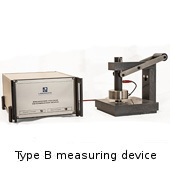|
|
Daily questions to a test house
|
Manufacturers, suppliers and users of FIBCs expect test houses to provide immediate exhaustive answers to questions which arise in their daily work. Obviously it is easier to ask somebody who is believed to be an expert than to look oneself into the relevant standards or specialist literature. Of course a test house should be able and willing to give assistance, especially if the problems are out of the ordinary. However, one is often astonished by the types of questions. I shall start with a series of comments in response to some of the most common such inquiries. For example:
Everybody knows that FIBCs for non-dangerous goods are divided into three categories. The categories differ in the safety factors and (!) - this is not known by everybody - as to whether reuse and repair are permitted or not. In detail the differences are as follows: HEAVY-DUTY REUSABLE FIBCS (8:1 SAFETY FACTOR)These FIBCs are designed and intended to be used for a multitude of fillings and discharges. FIBCs of this category are both factory and field repairable.Repairs should be carried out so that the repaired FIBC is capable of meeting the requirements of new FIBCs as marked on the label. FIBCs of this category are made for example of polymeric multifilament fabric heavily coated on one or both sides by a plastic material, e.g. polyvinyl chloride (PVC). Thermplastic techniques (welding) are mainly used in manufacturing - and they cost 20-50 times more than conventional PP-bags. |
Before any repairs are undertaken, the manufacturer or supplier should always be consulted. Factors which should be taken into account in deciding whether the FIBC is field repairable, factory repairable or non-repairable depend on the materials of construction, the type and area of the damage, the age of the FIBC, the conditions to which the FIBC has been subjected during service and the location of the damage. Important note: FIBCs as described below are able to fulfil the test procedures of heavy-duty FIBCs. Nevertheless, they remain classified as standard-duty FIBCs because they are not allowed to be repaired. STANDARD-DUTY REUSABLE FIBCS (6:1 SAFETY FACTOR)These FIBCs are designed and intended to be used for a limited number of fillings and discharges. FIBCs of this category cannot be reused if damaged, i. e. they are not repairable. The replacement of a removable inner liner is not considered as repair.FIBCs of this category are usually made of polypropylene (PP) fabric, without or with light coating an one side. Sewing techniques are mainly used in manufacture. When damage affecting the strength of the FIBC is discovered, the FIBC shall be taken out of service immediately. Once more: Even if these FIBCs fulfil the test requirements for heavy-duty FIBCs, they remain classified as standard-duty FIBCs. SINGLE-TRIP FIBCS (5:1 SAFETY FACTOR)These FIBCs are designed and intended to be used for one filling and one discharge only. An FIBC of this category cannot be reused. Neither replacement of an inner liner nor repair are relevant to this category of FIBC. In principle design, material and manufacturing do not differ from those of standard-duty reusable FIBCs. |
RESTRICTION REGARDING REUSE OF FIBCSAn FIBC certified and marked as a reusable (heavy- or standard-duty) FIBC in conformity with the standards shall be reused only with the same type of contents as in the first use. Reuse of FIBCs with contents differing from those of the first use are not in accordance with the standards. HOW MANY REUSES ARE ALLOWED?When one considers this question logically, it can be seen not to be well thought through since the number of reuses depends on the conditions of handling to which the bag has been subjected. In all seriousness, no manufacturer can guarantee a specific number of reuses. The responsibility lies with the user to decide if an FIBC can be used or not. Before reuse, the FIBCs should be thoroughly examined for damage to the stitchings / gluings / weldings as well as for surface abrasion, cuts, contusions, tears or any damage to the bag like ultra violet degradation and/or chemical attack. Particular attention should be paid to the lifting loops and similar critical components as well as their attachments. ALLOWABLE DEVIATIONS COVERED BY A TYPE TEST CERTIFICATEWithin an FIBC-type the circumference may be increased by up to 10% provided the same geometry is maintained. That means a circular bottom shall remain circular, a square bottom shall remain square and a rectangular bottom shall remain rectangular keeping the same proportional relations. Where the FIBC-type has a discharge spout, smaller diameter discharge spouts of like design or base without spout are allowed. |
Comments are welcome and these may be sent by letter to Dr Kielbassa, c/o INDUSTRIAL BULK WORLD, 25 West Cottages, Off West End Lane, London NW6 1RJ, UK. Alternatively, he can be contacted direct (tel: +49 531 33 9011, fax: +49 531 33 9013; email: This email address is being protected from spambots. You need JavaScript enabled to view it.).










